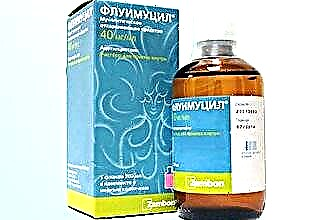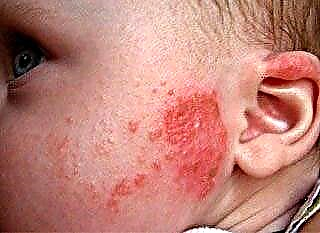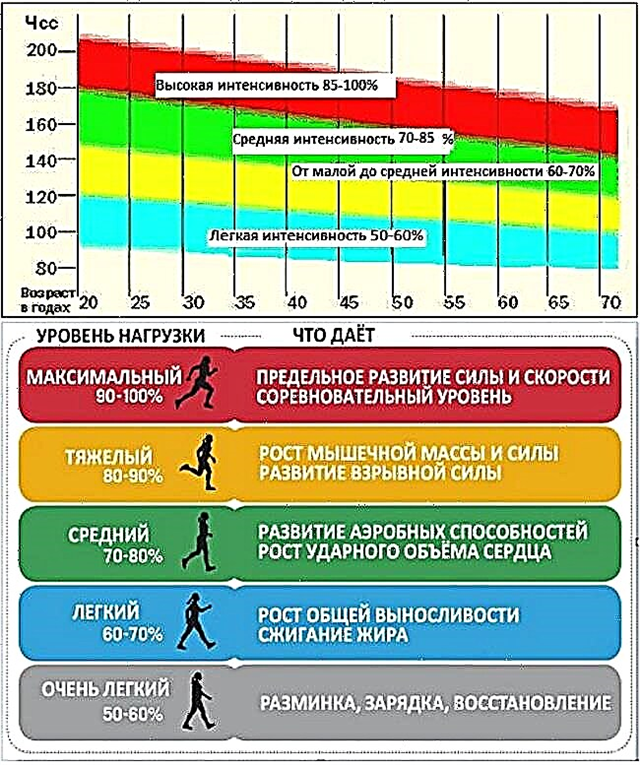Excessive mucus production in the airways causes discomfort and interferes with normal breathing. Throat congestion is a pathological symptom indicating the presence of inflammatory processes in the ENT organs.
 Overproduction of physiological secretions by the tracheobronchial tree leads to the accumulation of viscous masses in the throat, trachea and bronchi.
Overproduction of physiological secretions by the tracheobronchial tree leads to the accumulation of viscous masses in the throat, trachea and bronchi.
The reasons for the increased functioning of the goblet cells located in the ciliated epithelium lie in the formation of foci of inflammation in the respiratory organs. Stubborn sputum creates an obstacle to the passage of air through the respiratory canal, as a result of which there is a feeling of a stuffy throat. The principles of palliative and pathogenetic therapy depend on the etiology of the disease, the intensity of mucus production and associated clinical manifestations.
Pathogenesis
Why is the throat clogged and how to eliminate the discomfort? The mucous membranes of the nasopharynx contain goblet cells that produce a specific secret. It performs a protective function, preventing the development of pathogenic flora in the respiratory tract. Viscous mucus contains immunoglobulins that inhibit the activity of opportunistic microorganisms.
A decrease in the body's resistance leads to tissue infection and the formation of lesions in the ENT organs. Pathological reactions in the airways stimulate the activity of the goblet cells, as a result of which an excess amount of phlegm is formed, flowing down the throat. In the absence of adequate therapy, the posterior pharyngeal wall becomes inflamed, which leads to atrophy of the ciliated epithelium and, accordingly, the accumulation of pathological secretions in the upper and lower parts of the respiratory system.
To cleanse the respiratory system from difficult sputum, they resort to inhalation, rinsing and the use of expectorant drugs. However, they only facilitate the course of pathology, but do not eliminate the very cause of its occurrence. For the successful elimination of respiratory disease, it is necessary to take medications of etiotropic action aimed at the destruction of pathogenic agents.
Infectious causes
 What are the main reasons for the accumulation of mucus in the respiratory system? In most cases, hypersecretion of difficult sputum is associated with an infectious lesion of the ENT organs. Pathogenic fungi, microbes and viruses have a destructive effect on the ciliated epithelium, as a result of which foci of inflammation are formed on the surface of the mucous membranes.
What are the main reasons for the accumulation of mucus in the respiratory system? In most cases, hypersecretion of difficult sputum is associated with an infectious lesion of the ENT organs. Pathogenic fungi, microbes and viruses have a destructive effect on the ciliated epithelium, as a result of which foci of inflammation are formed on the surface of the mucous membranes.
Catarrhal processes in the airways stimulate the secretion of mucus, which contains immunocompetent cells. However, it includes not only phagocytes, macrophages or leukocytes, but also proteins, which are the optimal environment for the reproduction of pathogenic microbes. That is why the untimely elimination of phlegm from the throat entails the development of more serious diseases.
Excessive formation of a viscous secretion is most often associated with the appearance of such infectious pathologies as:
- pharyngitis;
- sinusitis;
- sinusitis;
- tracheitis;
- bronchitis;
- pneumonia;
- laryngitis;
- rhinopharyngitis;
- acute tonsillitis;
- adenoiditis;
- flu.
Important! The penetration of any foreign agents into the airways provokes hypersecretion of physiological mucus, as a result of which the patient's breathing becomes difficult.
Timely diagnosis and therapy of ENT diseases reduces the risk of complications. At the same time, inadequate treatment entails the chronicization of inflammatory reactions, which can lead to the appearance of an obstructive syndrome.
Non-infectious causes
The causes of pharyngeal congestion are not always rooted in septic inflammation of the tissues of the respiratory system. Exogenous factors and dysfunction of other organs and systems can provoke an increase in the volume of sputum in the respiratory tract. The throat may become clogged for the following reasons:
- allergic reaction;
- gastroesophageal reflux;
- neurological disorders;
- inhalation of tobacco smoke;
- abnormal structure of the nasal septum.
Some patients face a problem due to the use of poor quality food or food that is too hot. A burn of the mucous membranes leads to dysfunction of the ciliated epithelium, as a result of which mucus begins to accumulate in the respiratory canals.
In about 3% of cases, the accumulation of phlegm in the pharynx is associated with the development of benign or malignant tumors.
Most often, the throat is congested in smoking patients, since the tar contained in tobacco smoke sticks together the cilia of the ciliated epithelium, which prevents the normal evacuation of mucus from the upper airways. In addition, addictions reduce the reactivity of the body, as a result of which the risk of developing acute and sluggish inflammation increases.
Expectorants
What to take if there is a congestion in the throat? Treatment is carried out with expectorants, which thin the mucus and speed up the process of its removal from the respiratory tract. Secretolytic (thinning secretions) and secretomotor (stimulating the evacuation of secretions) drugs are used in the treatment of acute and chronic respiratory diseases.
Symptomatic drugs prevent the accumulation of pathological mucus in the pharynx, thereby facilitating the patient's breathing. However, exceeding the dosage can negatively affect well-being, cause nausea, diarrhea and watery eyes. Therefore, before using expectorants, you need to consult a doctor. Depending on the intensity of sputum formation, he will prescribe suitable medications and establish the optimal dosage of funds.
Removal of pathological secretions from the bronchi and airways helps to restore the drainage function of the lungs. The absence of an excessive amount of sputum in the body prevents the spread of pathogenic flora and the development of obstructive syndrome. However, it should be borne in mind that children under 2 years of age should be given expectorant medications only as a last resort. Secretomotor drugs stimulate the activity of the epithelium, which leads to an increase in the volume of viscous fluid in the respiratory organs.
Unproductive coughing up of sputum is fraught with the development of chronic bronchitis and pneumonia.
Effective drugs
What to do if your throat is blocked? Secretolytic and secretomotor drugs make it possible to convert an unproductive cough into a wet one. Active coughing up of mucus helps to clear the airways and eliminate the unpleasant sensation in the throat. Expectorants are available in the form of a spray, pills, tablets, syrups, suspensions, solutions, etc. For the treatment of children, it is advisable to use drugs in the form of syrups and suspensions.
Medicines containing extracts of medicinal herbs - plantain, sage, St. John's wort, licorice root, coltsfoot, thyme, etc. allow curing dry and wet coughs. Effective drugs include:
| Name | Release form | Active ingredients | Operating principle |
|---|---|---|---|
| "Mukaltin" | syrup, tablets | marshmallow root extract | reduces the viscosity of pathological mucus and stimulates the motility of the bronchioles |
| "Gerbion" | syrup | plantain or ivy extract | increases the production of surfactant, thereby reducing the elasticity of mucus |
| "Thermopsol" | pills | thermopsis herb powder | stimulates the secretory activity of the bronchioles and the work of the cough centers, which accelerates the evacuation of mucus |
| "Gelomirtol" | capsules | myrtol essential oil | stimulates the activity of the mucociliary epithelium, as a result of which the density of mucous secretions in the throat and bronchi decreases |
| "Mukofar" | tablets, solution for inhalation | bromhexine metabolites | regulates the production of bronchopulmonary mucus, reduces its viscosity due to the destruction of monosaccharide bonds in the liquid |
Irrational intake of medications entails side reactions - nausea, vomiting and angioedema.
Mucolytic agents normalize mucociliary transport of bronchial secretions, which accelerates its evacuation from the respiratory tract. Expectorant drugs cleanse the larynx of mucous and purulent masses, as a result of which the patient's normal breathing is restored.
Rinses
How to treat colds accompanied by the accumulation of pathological secretions in the throat? Gargling is one of the most effective methods of clearing sticky mucus from the airways. Regular sanitizing procedures contribute not only to liquefaction of sputum, but also to remove more than 60% of pathogens from foci of inflammation in the oropharynx.
It is more advisable to use decoctions from medicinal plants as mucolytic agents. Pronounced secretolytic and secretomotor properties are possessed by:
- marshmallow root;
- oregano;
- wild rosemary;
- peppermint;
- plantain;
- elecampane;
- St. John's wort.
The effectiveness of therapy depends on the regularity  washing the throat with medicinal broths. To alleviate the symptoms of respiratory illness, procedures should be performed 4 times a day for a week. To prepare a mucolytic solution, you must:
washing the throat with medicinal broths. To alleviate the symptoms of respiratory illness, procedures should be performed 4 times a day for a week. To prepare a mucolytic solution, you must:
- pour 30 g of dry raw materials into 1 liter of water;
- boil the broth for 10 minutes;
- judge and strain the liquid;
- let the broth brew for 3 hours.
Before use, the broth must be warmed to a comfortable temperature to prevent narrowing of the blood vessels. After the sanitizing procedure, it is advisable not to eat food for 20-30 minutes.
Inhalation
Nebulizer inhalation is the safest method of treating ENT diseases in children and adults. If the patient has a blocked throat, phytopreparations with bronchodilator, thinning and anti-inflammatory effects will help prevent the accumulation of mucus. If inhalation is done, within 15-20 minutes after the procedure, the patient will feel relief associated with the discharge of mucus from the respiratory tract.
For carrying out a physiotherapy procedure, medicinal solutions are usually used, such as:
- Sinupret;
- Ambrobene;
- "Pertussin";
- Rotokan;
- "Malavit";
- "Atrovent";
- "Berotek".



